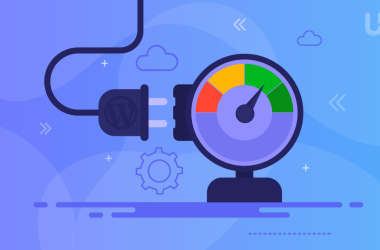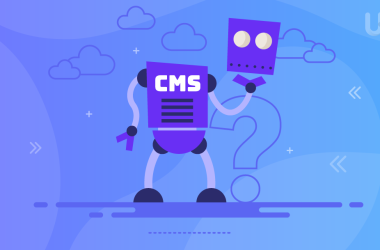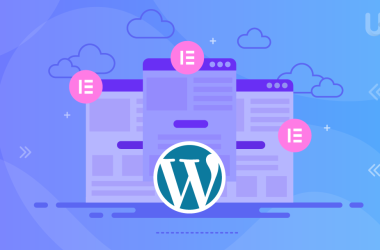WordPress 6.8 landed on April 15, 2025, and it doesn’t hold back. Smarter block controls, dusted-off APIs, and under-the-hood tweaks combine for one of the richest, least clunky releases in ages. Full-site editing gets another nudge, while newcomers like font and pattern management edge the editing experience closer to true “what you see is what you get” territory.
Key Takeaways
- WordPress 6.8 introduces powerful block editor upgrades – The update brings smoother navigation, advanced design controls, and improved block patterns to make site building faster and easier.
- Enhanced site editing tools boost flexibility – Full Site Editing (FSE) in WordPress 6.8 allows more control over headers, footers, and templates without needing custom code.
- Performance improvements speed up websites – Optimizations in caching, lazy loading, and core scripts ensure WordPress 6.8 websites load faster and run more efficiently.
- Accessibility takes center stage – The update includes better keyboard navigation, screen reader support, and ARIA enhancements, making websites more inclusive.
- Security upgrades strengthen protection – WordPress 6.8 patches vulnerabilities and introduces more reliable security checks to keep websites safe from evolving threats.
- Future-ready features support growth – With compatibility updates, modern design options, and improved developer tools, WordPress 6.8 ensures long-term stability for scaling websites.
Developers see tidier hooks and broader extension points; designers gain fresh visual levers that avoid raw PHP. Content authors simply notice an interface that feels snappier and less glitchy than yesterday.
What’s New in WordPress 6.8?
The April release spreads its improvements across the core engine, the block canvas, and the front-end dashboard. Performance veers upward, workflows get streamlined, and compatibility with older themes and plugins is left intact. Long story short, 6.8 stretches the design envelope while keeping the familiar WordPress heartbeat steady.
WordPress 6.8 quietly polishes the engines under the hood. New APIs simplify code chores, fresh template-management widgets tidy the dashboard, and the Interactivity API (Application Programming Interface) stretches a little wider for more responsive tricks.
Elevate Your Website with UltaHost WordPress Hosting
Whether you’re a business seeking reliability or an individual embarking on an online venture, our WordPress Hosting will provide the power and flexibility you need.
The block editor’s face-lift is harder to miss. Designers now yank at spacing, borders, and type size with obvious sliders; they can swap in synced patterns nearly on autopilot, and reusable blocks have gathered a few extra housekeeping buttons.
Accessibility work sometimes feels like an afterthought, yet this time it isn’t. Smarter keyboard paths, cleaner ARIA tags, and kinder screen-reader speech apply to every corner of the admin and Site Editor, leaving the interface friendlier to all. Performance fans will note a hiccup-free launch, with smaller asset payloads and zippier page paints making the back end feel less weighed down.
True to its promise, 6.8 breaks almost nothing. Old themes and ancient plugins sit comfortably alongside the update, and the editing canvas nudges creators toward built-in tools instead of sending them to a dozen different add-ons.
Key Block Editor Enhancements
When WordPress 6.8 touches down, the block editor wakes up. Builders and code-wranglers find fresh muscles, sharper patterns, and smarter reusable content. Suddenly, the whole workspace feels more alive and, frankly, a lot less fussy.
New Block Controls and Improvements
Dig in, and the Group block hits you first. A crisp background image option slides in, so text and buttons nestle against a full-width photo without a line of custom CSS. Designers grin; hero sections and eye-catching call-outs get reinvented on the fly.
Spacing chores stops feeling like a guessing game. Tightened presets and handier alignment toggles let precision nerds snap margins and paddings into place at last. One-click uniformity fits right alongside any in-house design guide.
Then there is the Sticky block, still rocking that experimental sticker, but hard to ignore. Pin a navigation strip or a promo blurb and watch it cling to the viewport while everything else slides by. A subtle tweak, yet the difference in user eyes is real.
Pattern Management Upgrades
Patterns are still the backbone of the block editor, and WordPress 6.8 polishes their handling even further. Newly added labels separate synced from unsynced layouts at a glance, so you no longer second-guess whether a change will ripple through. Fresh sort and preview buttons let you ditch the side hustle of searching for just the right look. In fact, that extra breathing room can feel like stealing back a whole afternoon.
Custom categories keep your design library tidy, which matters if your agency is juggling dozens of sets at once. The previews you see now match the final page more closely, saving a click of faith every time you drop in a new piece. Developers notice that minor detail, but most clients simply appreciate getting it right on the first try.
Reusable Blocks Evolution
The phrase reusable block vanishes in 6.8, replaced everywhere by synced pattern, and the switch comes without extra training wheels. Calling them synced patterns is a straight-up description of what they do, displaying the WordPress habit of naming things for once. The underlying magic stays unchanged: change one of these patterns and every spot it appears, hundreds on the same site, if you’ve been unlucky, succumb to the update at once. Even veteran editors feel a tiny lift of relief when a feature finally looks like its own gospel.
WordPress 6.8 quietly ropes in an autosave feature for Synced Patterns. Tinker with a layout and, just like that, your edits stick even if you wander away, so the panic of lost work and surprise content mismatches eases a bit. It seems small, yet readers inside busy editorial teams are already calling it a lifesaver.
Design Tools & Style Enhancements

WordPress 6.8 draws a straight line toward sharper visuals. Fresh sliders for borders, sharper picks for colors and gradients, and a wardrobe of typefaces let anyone drag together eye-popping chapters without hunting for snippets of custom CSS or loading extra WordPress plugins. A novice who only half-understands the dashboard still walks away feeling like a designer.
New Design Controls
Border control finally graduated from the wish list. This release lets you dial in a different corner radius for each angle of a block. Shape the top-left with a gentle arc, leave the bottom-right razor-edged, and everything stays tidy inside the block panel. Pages pick up that tailored, modern vibe without breaking a sweat.
Typography also sees some real upgrades. There’s tighter letter-spacing control, plus fluid settings that let type scale comfortably from phone to desktop. Your headings and paragraphs end up looking great everywhere, and you don’t have to touch a single media query.
Color & Gradient Features
Color customization feels sharper in WordPress 6.8. Updated tools let you grab brand palettes quickly, and custom gradient presets give you elegant backgrounds in a few clicks. Multi-stop gradients are built right in, so rich, blended looks happen with almost no fuss.
The Style Book gets a nice boost, too. You can watch global style changes ripple across blocks in real time, which cuts down on the guesswork. Live previews are more accurate now, letting you tweak a theme-wide setting and see the impact without endless back-and-forth.
Font Library Update
WordPress 6.8 arrives with a shiny new Font Library tucked right into the dashboard menu. In plain English, that means you can drag in your own typeface, assign it to headings or paragraphs, and see the change live without ever cracking open a PHP file. That little luxury is something designers have wanted for years and now finally have.
Connecting a branded font used to demand a mild developer sprint or yet another plugin furball. With this release, the upload button handles the job on its own, and the whole process feels as smooth as picking a color swatch. You choose a file, set a weight, and move on; frankly, it’s a pleasant shock.
The arrival of this one-stop font tool nudges WordPress away from its roots as a blogging engine and into full visual-identity territory. Crafting a website that looks polished and on-brand no longer requires juggling ten tabs or patching together code snippets. For folks who live in design software rather than a code editor, that kind of relief is nothing short of refreshing.
Site Editor Improvements
Same release, different headline: the Site Editor keeps grinding toward the dream everyone keeps talking about. Menus slide around more naturally, templates spotlight themselves instead of hiding, and the general vibe is simply friendlier.
Play with responsiveness, and the interface no longer fights back; it mostly does what you hope it will. Folks building custom layouts without deploying a single snippet should notice those small wins pile up quickly. For many users, the sheer trust of pushing changes and seeing them stick without debugging the upgrade they’ve been waiting for.
Menus sit at the heart of almost every website, and WordPress 6.8 changes the way we tinker with them for the better. The upgraded Navigation block bundles layout tweaks, drag-and-drop edits, and item rearranging into a single pane inside the Site Editor, so there are far fewer screen-hops and context switches.
One continuous flow now feels normal. On the accessibility front, mobile scaling and keyboard navigation also get their due credit. Menus behave consistently on phones, tablets, and desktop assistive devices, giving sighted and non-sighted visitors roughly the same smooth ride no matter where they start.
Template Management
More room for experimentation appears in the template section thanks to a fresh set of createable blueprints. Users can spin up custom layouts for author-holding archives, date-stamped roll-ups, category landing pages, and a handful of other post-grouping formats, meaning the look of core content can wander far beyond the default mold.
Managing your themes gets a lot smoother in 6.8. The template pane no longer hides inside narrow tabs; its new block-grid layout lets you see headers, footers, and custom designs at a glance. Picking one, making a tweak, and watching the live preview respond feels almost effortless, which is a relief if you hop between client sites all day.
That very ease sits at the heart of the latest Site Editor changes and tracks back to a simple idea-give people total control without overwhelming them. From personal journals to large-pitch wireframes, creators report the flow is quicker, clearer, and just plain more fun than it used to be.
Accessibility & Performance Boosts
Accessibility sits beside polish on the release checklist. Screen-reader cues are sharper, color contrasts have been tuned, and load times drop across shared hosts and mobile devices alike. Taken together, these tweaks nudge WordPress a little closer to the goal of a web that works, no matter who clicks or which pocket device they hold.
Accessibility Wins
Accessibility has landed front and center in WordPress 6.8. This time, the keyboard navigation updates steal the spotlight, letting users glide through the admin dashboard and the block editor without needing a mouse at all. Menus, toolbars, and hidden settings open up in a way that feels more like a smooth path and less like a maze. Anyone who relies on shortcuts to manage content day-to-day should notice the difference right away.
Behind the scenes, the project also tightens up its ARIA (Accessible Rich Internet Applications) attributes. Labels, roles, and those little status flickers are tagged more precisely now, which helps screen readers paint a clearer picture of what a page is doing. The result is a session that feels less clunky and more conversational for someone navigating by ear. Developers behind the scenes hope these tweaks reaffirm that WordPress is really meant for everybody, no matter how they browse or which gadgets they trust.
Performance Improvements
Web speed is still the currency that buys patience. Open WordPress 6.8 and you’re greeted by a handful of quiet under-the-hood performance wins that shave milliseconds off both the editing canvas and the public-facing pages. The difference won’t light up a dashboard lamp, but after a few dozen publishes it compounds into a noticeably snappier workflow.
Editors keeping tabs on the block panel have probably noticed pages load noticeably quicker than before. Templates flick over almost on a whim, and dragging in fresh blocks stops feeling like a chore. The whole workspace just behaves like it’s in a hurry, which is a real blessing for sprawling, busy sites.
Out front, images and iframes now tuck themselves away until the visitor’s eyes actually land on them. That subtle delay boosts Core Web Vitals numbers; Google still holds up as proof that a site is polite and sprightly. Servers may shrug, but browsers love the break, and rankings tend to smile right back.
Toss those accessibility shifts together with the new speed tricks, and you catch the bigger theme: WordPress is still trying to make the open web faster and ready for whatever comes next. Designers chasing nimble pages or users chasing easy journeys, sometimes both at once, will find 6.8 lends a helpful hand.
Elevate Your Site’s Performance with Fast WordPress Hosting!
Are you looking for a hosting solution that offers unmatched speed, security, and reliability? Choose ultrafast WordPress hosting from UltaHost and take advantage of cutting-edge technology, GDPR compliance, and 24/7 support.
Developer-Focused Changes
Builders poking around in the engine bay dont get left out either. The release folds in cleaner block-insertion hooks and sharper JavaScript tools, which some devs quietly call their vitamins. That extra flexibility opens saner pathways for anyone extending WordPress without leaving a mess behind.
Block Hooks API Enhancements
Writers of themes and plugins are going to appreciate the fresh turn the Block Hooks API has taken in WordPress 6.8. By broadening the set of filters and hooks, the API now permits a block to slip into the layout on the fly, rather like tacking up a new bulletin on a wall without hammering back into the drywall.
Someone could code a shiny promotional banner to slide in right before a post title or let a snappy call-to-action tag along beneath a product card. That sort of trick keeps the skeleton of the template file intact while handing the plugin developer a free hand with last-minute content.
Modular themes, which strive to keep design worries apart from logic and data, stand to gain a lot from this capability.
Interactivity API
The Interactivity API, which first made waves in earlier releases, keeps tightening its grip in version 6.8. Developers can spin up responsive, JavaScript-driven blocks without reaching for bulky front-end toolchains.
Latest tweaks streamline block registration and tidy up the syntax for behaviors like toggles, modal windows, or previews that update on the fly.
WordPress core teams have spent time fine-tuning the way the editor updates its under-the-hood HTML. Hooks that only touch part of the DOM now run a little quicker and feel less jarring when you add or move content on the fly.
Deprecated Functions or Breaking Changes
Every so often, the past weighs down progress, so 6.8 sheds a handful of Classic Theme functions and a few legacy editor flags. They’ve been marked as deprecated and pushed off in favor of their block-based neighbors.
A separate tweak nudges block markup itself, and that can trip up any custom CSS that’s written in chalk rather than pencil. If your rules are hard-coded, they may need a second look.
Favorite plugins that lean on the older JavaScript APIs won’t break outright, yet they’ll likely misbehave until the code is re-aligned with the newest editor hooks.
How to Update to WordPress 6.8 Safely
Shifting a live site to WordPress 6.8 without a safety net is inviting trouble. The most sensible first move is a full backup of files, uploads, themes, plugins, and the heartbeat of it all-the database.
Most hosts conceal a one-click backup inside the dashboard, so check there first; it saves time and worry. Otherwise, an off-the-shelf plugin such as UpdraftPlus or BlogVault will handle the job reliably. Once the snapshot is captured, the actual update only takes a moment and comes with far less risk.
Before you hit the big update button, double-check whether your theme and plugins play nice with WordPress 6.8. A quick peek at each changelog or the author’s support page usually shows if they’ve verified compatibility.
If you can, clone your site to a staging space first; that safe pocket lets you spot broken layouts, errant scripts, and any awkward clashes without upsetting visitors. When every detail works as it should, you’re clear to refresh the live site and carry on with confidence.
Final Thoughts – What WordPress 6.8 Means for You
With this release, the block editor gets sharper, pattern control feels more natural, and designers enjoy finer font tweaks. Performance tweaks sit under the hood alongside fresh accessibility improvements, so 6.8 not only speeds up pages but widens the Web’s reach for every visitor.
WordPress 6.8 isn’t just another incremental bump; it feels like the project finally cracked the code on full-site editing. The Site Editor now responds more like a live dashboard than a lab experiment, letting anyone swap templates or tweak headers on the fly. Designers, developers, whoever you are, the invitation is open: jump in, poke around, and build something fresh without wrestling with half-baked theme options.
If you are looking for the best web hosting in Kenya that allows your business to explore its full potential, Ultahost is the way to go. Choose a fast, safe, and affordable WordPress hosting. Visit our website for more information.
FAQ
What is the release date of WordPress 6.8?
The WordPress team rolled out version 6.8 on April 15, 2025. The release bundled faster queries, tighter code, and a surprising number of design goodies.
What are the major new features in WordPress 6.8?
Highlight updates include smoother block controls, the ability to pin background images to Group blocks, linked pattern collections, a revamped navigation menu block, quick access to web-font libraries, and general performance polish.
Are reusable blocks still available in WordPress 6.8?
They are, though they’ve morphed into Synced Patterns and play under the new Patterns umbrella. Functionality remains intact, but autosave kicks in more reliably, and sorting feels a lot cleaner.
How has the Site Editor improved in WordPress 6.8?
The update adds drag-and-drop menu editing, clearer template controls, smarter keyboard shortcuts, and a friendlier UI for shaping the site’s outline, all housed under the same Site Editor roof.
Can I upload custom fonts in WordPress 6.8?
Sure enough. A built-in Font Library lets you upload, sort, and apply any font you like right in the editor, so there’s no need to fiddle with code or hunt for extra plugins.
What new keyboard shortcuts did WordPress 6.8 add to the command palette?
WordPress 6.8 introduced two handy new commands Add New Page and Open Site Editor that can be accessed quickly via the Command Palette.
Were there any updates to block‑level hotkeys like cut or copy?
Yes! WordPress 6.8 now includes a Cut option alongside Copy in the block options menu, allowing you to move blocks using keyboard shortcuts more efficiently









